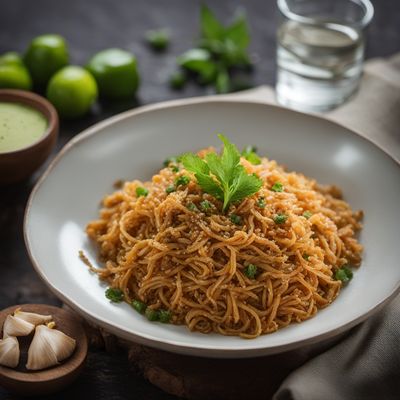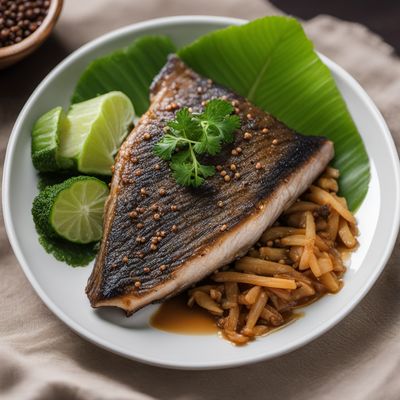
Ingredient
Milkfish
The Silver Delicacy of the Sea
Milkfish has a slender and elongated body with silvery scales and a slightly forked tail. Its flesh is tender and flaky, with a mild and slightly sweet flavor. The texture of milkfish is moist and succulent, making it a favorite among seafood lovers. When cooked, the flesh turns white and easily flakes apart.
Origins and history
Milkfish is native to the Pacific Ocean and is widely cultivated in Southeast Asia, particularly in the Philippines, Indonesia, and Taiwan. It has a long history of consumption in these regions, dating back thousands of years. Milkfish is highly valued for its nutritional content and is considered a staple food in many coastal communities.
Nutritional information
Milkfish is a good source of protein, omega-3 fatty acids, and various vitamins and minerals. It is also relatively low in calories and fat, making it a healthy choice for seafood enthusiasts. A 3.5-ounce serving of milkfish provides approximately 145 calories and 25 grams of protein.
Allergens
Milkfish is not known to be a common allergen, but individuals with fish allergies should exercise caution when consuming it.
How to select
When selecting milkfish, look for fish that have clear and bright eyes, shiny scales, and a fresh sea-like smell. The flesh should be firm and resilient to the touch. Avoid fish that have dull eyes, discolored flesh, or a strong fishy odor, as these are signs of poor quality or spoilage.
Storage recommendations
To maintain the freshness of milkfish, it is best to consume it on the day of purchase. If storing, wrap the fish tightly in plastic wrap or place it in an airtight container. Keep it refrigerated and use within 1-2 days. For longer storage, milkfish can be frozen, but it is recommended to consume it within 3 months for the best quality.
How to produce
Milkfish is primarily produced through aquaculture, with specialized fish farms dedicated to its cultivation. It requires brackish or saltwater environments for optimal growth. While it is possible to raise milkfish in home ponds or tanks, it is more commonly produced on a commercial scale.
Preparation tips
Milkfish can be prepared in various ways, including grilling, frying, baking, or steaming. It is often marinated with a combination of soy sauce, garlic, ginger, and calamansi juice to enhance its flavor. Milkfish is commonly used in traditional Filipino dishes such as sinigang (sour soup), escabeche (sweet and sour fish), and relleno (stuffed fish). It can also be enjoyed as a whole fish or filleted and added to stir-fries, curries, or soups.
Culinary uses
Milkfish is widely used in Southeast Asian cuisines, particularly in the Philippines, Indonesia, and Taiwan. It is commonly grilled, fried, or steamed and served with rice and various dipping sauces. Milkfish is also used in soups, stews, and curries, as well as in traditional dishes like bangus sisig (a sizzling fish dish) and bangus lumpia (fish spring rolls).
Availability
Milkfish is commonly available and cultivated in Southeast Asian countries such as the Philippines, Indonesia, and Taiwan. It can also be found in some Asian markets or specialty seafood stores in other parts of the world.
More ingredients from this category
Recipes using Milkfish

Crispy Garlic Butter Lamayo
Garlicky Delight: Crispy Buttered Lamayo

Crispy Grilled Fish with Spicy Tomato Sauce
Nigerian Spiced Grilled Fish with Tangy Tomato Sauce

Crispy Garlic Marinated Milkfish
Golden Crusted Garlic Milkfish Delight

Crispy Garlic Fried Fish
Golden Delight: Crispy Garlic Fried Fish - A Filipino Culinary Delight

Bangsilog - Filipino-Style Fried Milkfish with Garlic Rice and Fried Egg
Crispy Bangus Delight: A Filipino Breakfast Classic
